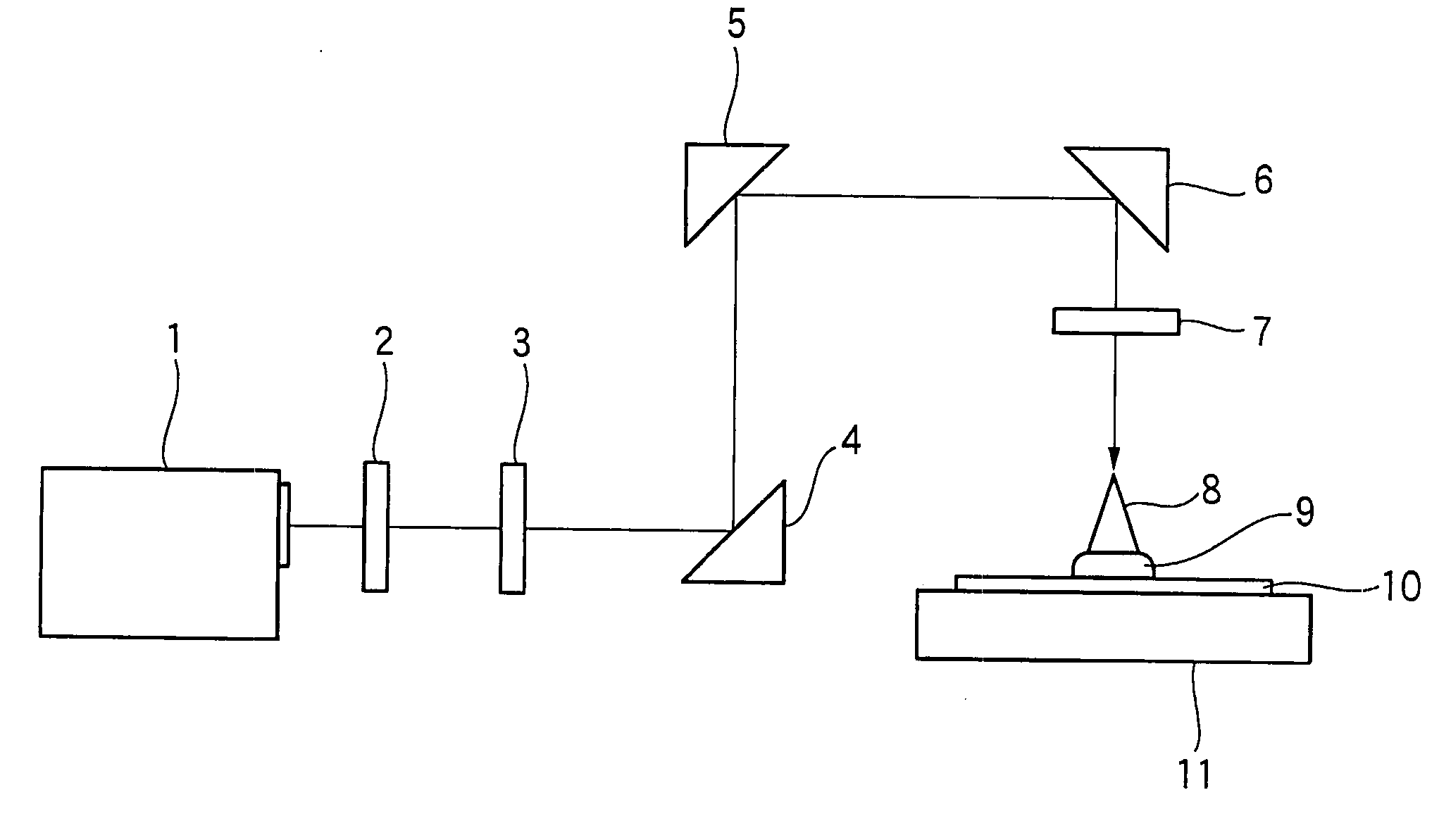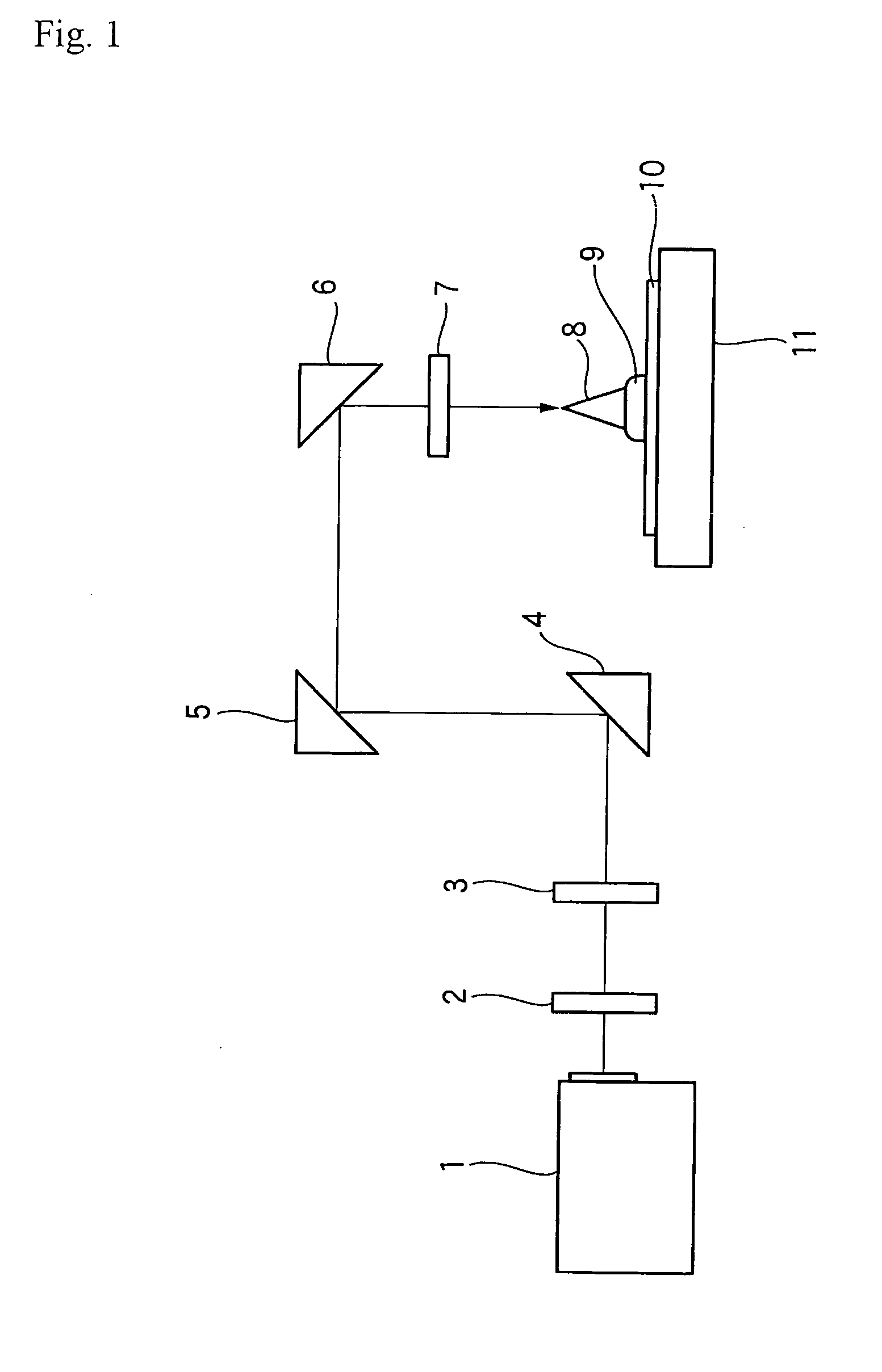Positive photosensitive composition and pattern-forming method using the same
a technology of composition and pattern, applied in the direction of photosensitive materials, instruments, auxillary/base layers of photosensitive materials, etc., can solve the problems of line pattern formation collapse, difficult to find combinations of resins, light-acid generators, additives and solvents to be used, and insufficient chemical amplification series resists, etc., to achieve excellent resolution, improve the roughness of line edges and pattern collapse, and improve the effect of photosensitive composition
- Summary
- Abstract
- Description
- Claims
- Application Information
AI Technical Summary
Benefits of technology
Problems solved by technology
Method used
Image
Examples
synthesis example 1
Synthesis of Compound (A2-II-1)
[0270] Triphenylsulfonium iodide (3.3 g) was dissolved in acetonitrile / distilled water (2 / 1), 1.5 g of silver acetate was added to the above solution, and the solution was stirred for 30 minutes. A precipitated silver compound was filtered, and 2.55 g of bis(trifluoromethanesulfonyl)imide lithium salt mixed in acetonitrile / distilled water (2 / 1) was added to the filtrate. The reaction solution was concentrated, and then dissolved in 200 ml of chloroform. The resulted solution was washed with distilled water, an aqueous solution of ammonium chloride, and water. The organic phase was filtered through a polytetrafluoroethylene filter having a pore diameter of 0.1 μm and the filtrate was concentrated, whereby 3.4 g of compound (A2-II-1) was obtained.
synthesis example 2
Synthesis of Compound (A2-II-4)
[0271] Triphenylsulfonium iodide (3.3 g) was dissolved in acetonitrile / distilled water (2 / 1), 1.5 g of silver acetate was added to the above solution, and the solution was stirred for 30 minutes. A precipitated silver compound was filtered, and 2.94 g of a compound represented by formula (IA) shown below dissolved in acetonitrile / distilled water (2 / 1) was added to the filtrate. The reaction solution was concentrated, and then dissolved in 200 ml of chloroform. The resulted solution was washed with distilled water, an aqueous solution of ammonium chloride, and water. The organic phase was filtered through a polytetrafluoroethylene filter having a pore diameter of 0.1 μm and the filtrate was concentrated, whereby 4.2 g of compound (A2-II-4) was obtained.
synthesis example 3
Synthesis of Resin (RA-1)
[0272] Under nitrogen current, 5.7 g of propylene glycol monomethyl ether acetate and 3.82 g of propylene glycol monomethyl ether were put in a three-neck flask and heated at 80° C. Monomer (1) (9.5 g) shown below, 4.7 g of hydroxy-adamantane methacrylate, 9.5 g of 2-methyl-2-adamantyl methacrylate, and 6 mol % to the monomer of a polymerization initiator V-601 (a product of Wako Pure Chemical Industries) were dissolved in a mixed solvent comprising 51.2 g of propylene glycol monomethyl ether acetate / 34.1 g of propylene glycol monomethyl ether, and the solution obtained was dripped into the flask over 6 hours. After completion of dripping, the reaction solution was further allowed to react at 80° C. for 2 hours. After being cooled, the reaction solution was poured into 900 ml of hexane / 100 ml of ethyl acetate, and the precipitated powder was filtered and dried, whereby 19 g of resin (RA-1) was obtained.
Mixture of Isomers Different in Bonding Position of ...
PUM
 Login to View More
Login to View More Abstract
Description
Claims
Application Information
 Login to View More
Login to View More - R&D
- Intellectual Property
- Life Sciences
- Materials
- Tech Scout
- Unparalleled Data Quality
- Higher Quality Content
- 60% Fewer Hallucinations
Browse by: Latest US Patents, China's latest patents, Technical Efficacy Thesaurus, Application Domain, Technology Topic, Popular Technical Reports.
© 2025 PatSnap. All rights reserved.Legal|Privacy policy|Modern Slavery Act Transparency Statement|Sitemap|About US| Contact US: help@patsnap.com



